Suanpalm Farmnok/Western Digital WD TV LIVE HUB Review

Quick Click Links
Feature Photograph
Suanpalm Farmnok Western Digital WE TV LIVE HUB, a Review
Photography News of Interest
Readers Submissions Readers Questions
A Snapshot of Bangkok Images Week in Review Infocus Blog, The Storyteller
lT
Feature Photograph *menu

Fuji x100 @F11 1/320th ISO 200
“BkkSteve, the most difficult thing for me is knowing what to photograph.” This might be the most common question I get during a workshop. It’s also a topic we could talk about and fill volumes with. In fact, many have. Thousands of such books. We’re going to cover this topic in a short multi-part series “Pointing Your Camera.”
The person asking this question is really telling me they have trouble ‘seeing’, or put more bluntly, filtering what they do see to narrow down their choices to the best available composition. You’re not alone, professionals the world over face the same question each and every time they pick up their camera.
Really, all it takes is thought. But thinking takes time and few are confident they’ll come up with the right image. So they avoid thinking much about their shots and they try to compensate in other ways. I’ve had friends and clients running around at light speed taking pictures of everything in sight hoping later in post-processing they’ll be able to pick out the best scene and come up with that magic image. This rarely works, the only difference in post processing ‘might’ be that you have more time to view. But the moment is lost and you can’t go back. My biggest challenge in such cases is to get them to slow down and smell the flowers.
Does this sound like you? Allow me to use the Karate Kid Mr. Miyagi analogy. When you learn martial arts (and many other things) you learn the process/steps in slow deliberate steps. You do this over and over enough times (wax on, wax off) and soon you can perform these steps extremely fast without much thought at all.
Some genres of photography are this way. It’s always better to put more thought into a composition, but certain types of photography, like street shooting, weddings, and event coverage provide little time for thought. So, practice your wax on and wax off steps, over and over again, and soon you’ll be able to step into a situation and make great compositions in a fraction of the time you could before.
Take enough time to go out with your camera and take slow deliberate steps, wax on/off, in deciding on your composition. Do this enough times and you’ll soon know what to point your camera at in a fraction of the time you could before.
As you get comfortable with choosing your composition add in your compositional rules of choice, steps for exposure, steps for critical focus, and soon you’ll achieve the Full Monty without much thought at all. You’ll even be able to do it with the kids hanging off your legs, the wife nagging, traffic buzzing, and Red Shirts protesting. Nothing will stop you from achieving great images.
Okay, that’s the theory, now let’s look at my shot above and I’ll explain what was going on in my head when I made this capture. Anyone who has been out shooting with me, either in a workshop environment or just a casual shoot, knows I often drive through areas in full scan mode. We might be talking, but my eyes are always “seeing” and at the drop of a hat, often in mid-sentence, I’ll stop the car to capture a scene.
This is how I found this scene in rural Oregon. I was driving the back roads and nothing seemed remarkable. I turned a corner and was presented with these wildflowers planted by a vineyard operator to prevent winter erosion. I saw that the wildflowers presented a sharp and colorful contrast to the rest of the environment so I looked around for other compositional elements.
The mountains were the obvious choice with the valley centered. The wicked winter sky was a bonus. Remembering my personal rule of always trying to ‘anchor’ a wide angle landscape I looked around for an anchor and couldn’t find anything. It was then that I noticed the wildflowers had as much detail as they did color, and if I moved right up on them they’d make a decent anchor as well.

Fuji x100 @F11 1/220th ISO 200
In the above composition I moved even closer and used the taller standing flowers as anchors, making sure they were sharply focused, there was enough depth of field (DOF) so the near hills were sharply focused as well. The three main colors, the grey of the sky, the green tree covered hill, and the yellow wildflowers equally divided the scene.
I find it pleasing, but not as strong as the first example image that peers over the entire crop of wildflowers and down through the valley with the interesting sky overhead.
You might not agree, you might prefer the latter or none at all. This is the choice you’ll soon make if you wax on and wax off enough to build your own style. And you’ll be able to wax on the move. Give it a try and see if it fits. I wish you fast and productive shooting.
Suanpalm Bird Farm *menu

Canon 5d Mark II, 300mm F2.8L IS @F4 1/50th ISO 200
Suanpalm Farmnok (bird farm) has long been on my “must visit” list for a number of reasons, but mostly because after being owned by a couple of parrots for the last ten years I’ve developed a keen interest in these fascinating creatures. However, something always seemed to get in my way every time I tried to plan a visit.

Canon 5d Mark II, 300mm F2.8L IS @F3.2 1/80th ISO 400
On one perfect unseasonably cool weekday the farms owner Dr. Bhokin graciously invited me for dinner and a tour of his facility and after arriving in the general area I drove around for the next 4-5 hours trying to find the place and failed. My friend who’s a professor at a top Bangkok University has a keen interest in photography and often volunteers as my assistant, was out of the country on business and I didn’t realize until that moment how much I counted on her for even the basics. I was forced to call and cancel dinner (with profuse apologies) and I headed back to Bangkok in shame and sorely disappointed. I knew my time in Thailand was short and I might not get another opportunity.

Canon 5d Mark II, 24-70mm F2.8L @F5.6 1/400th 28mm ISO 400
Later that month when my assistant returned I expressed my disappointment and cancelling some of her own plans, she arranged for us to make one last attempt to visit on my very last weekend in the Kingdom. I’ll always be grateful to her for this final adventure.

Canon 5d Mark II, 300mm F2.8L IS @F4 1/125th ISO 200
So it was with a large measure of excitement that I packed my gear (I even arranged to borrow back my 300/2.8 lens I’d recently sold), loaded it in my assistants small car, and headed out to Suanpalm Bird Farm. I didn’t know what to expect and quite frankly many such places have disappointed me in the past. I was humbled with how easily she found Suanpalm Bird farm.
For future reference the GPS coordinates are: N 13 44.760’ E101 09.467’

Canon 5d Mark II, 70-200mm F2.8L IS @F5.6 1/30th 75mm ISO 400
As we slowly entered the farm we could see it was still a work in progress. And what a great work it is! This is a large scale bird farm with lakes, numerous aviaries, and even a VIP guest quarters which I found nicer than most hotels I’ve encountered in Thailand. This was obviously a first class establishment, but I had no way of knowing just how nice it would really be.

Canon 5d Mark II, 24-70mm F2.8L @F5.6 1/25th 38mm ISO 200
Dr. Bhokin’s assistant Nattaya greeted us at the entrance and showed me to my guest room. My assistant elected to make the drive home for the evening. I couldn’t stop myself, despite it being too dark for quality photography I had my camera out and was busy taking pictures while they waited patiently for me to follow. I quickly stowed my gear and headed out for a look around.

Canon 5d Mark II, 24-70mm F2.8L @F5.6 1/50th 24mm ISO 800
The grounds are beautiful. But what really interested me was the main flight aviary and the building housing the hatchery and informational displays. The weather was hot and muggy and soon I was soaking wet with perspiration, but I continued on exploring as much as possible.

Canon 5d Mark II, 24-70mm F2.8L @F5.6 1/50th 24mm ISO 1600
Now would be a good time for first impressions. I remember standing there thinking it was obvious no amount of work or expense was spared in providing quality accommodations for the farms main residents. Hundreds and hundreds of colorful parrots covering over 80 species from all the parrot continents. The aviaries were first class, exceptionally clean, and obviously planned not only by an expert, but my someone who truly loves birds and wanted to provide for them the best home possible.

Canon 5d Mark II, 24-70mm F2.8L @F8 1/80th 48mm ISO 400
There’s much to describe Dr. Bhokin, his list of credentials are most impressive ranging from being a University Law Professor, to Minister of Interior, and even the Deputy Prime Minister among many other exalted positions. But what impressed me the most was his love for the birds.

Canon 5d Mark II, 24-70mm F2.8L @F8 1/125th 32mm ISO 400
As you wander the grounds you can’t help but feel this farm was created by someone who felt they were making their dreams come true. Dr. Bhokin was raised in an animal loving family where his father was a guiding influence. But he didn’t have his first bird until about 30 years ago when he acquired a Blue and Gold Macaw while he was lecturing law at Ramkhamhaeng University. Like most of us when first introduced to parrots, he was captivated, and he quickly realized there was a real need to preserve these birds which included captive breeding and study. With the help of his brothers and friends Suanpalm Farmnok was built.

Canon 5d Mark II, 24-70mm F2.8L @F8 1/100th 45mm ISO 400
It’s not until you meet Dr. Bhokin that you realize his topical knowledge is only surpassed by his innate kindness defined by the personal relationship he has with nearly every bird we encountered. As we walked through the farm every parrot seemed to know him and made efforts to interact. When we enjoyed lunch together a small cockatoo dined with us and I was able to more closely watch how he trained his birds. He didn’t do it with food and tricks, but by establishing a relationship on the birds level. This takes incredible patience.

Canon 5d Mark II, 24-70mm F2.8L @F8 1/125th 46mm ISO 400
Perhaps my favorite genre of photography is what we call environmental portraits. They’re very difficult to pull off correctly because you must capture the person involved in their professional or personal ‘essence’.
I didn’t visit Suanpalm Bird Farm to photograph Dr. Bhokin, though I knew an obligatory photo or two would be necessary. Yet, soon I found myself almost spellbound while watching him at work with his birds.

Canon 5d Mark II, 24-70mm F2.8L @F5.6 1/40th 24mm ISO 400
I was so involved with my observations that I made capture after capture without realizing I was working the camera. The environment while target rich, was not conducive to the best quality photographs, poor light, humid conditions, and stifling heat rarely are. But we do our best. You can’t use flash as a rule with animals and expect natural compositions. But I noted on my next visit (and there will be a next visit) I’d bring specialized lighting gear to enhance my photography.

Canon 5d Mark II, 24-70mm F2.8L @F5.6 1/60th 70mm ISO 400
Inside the main building you’ll find large informational displays covering areas from diseases, topography of specific species, species geography, and much more. You can spend hours looking at the pictures and reading the displays.

Canon 5d Mark II, 24-70mm F2.8L @F5.6 1/80th 24mm ISO 1600
As you head upstairs towards the hatchery you pass through a thoughtful display designed to show parrots in their natural habitat. But soon you notice the plants are plastic and the parrots professionally mounted.

Canon 5d Mark II, 24-70mm F2.8L @F5.6 1/4th 48mm ISO 1600
I suppose it gives the timid a birds eye view as you can get as close as you want without fear the birds will decide to use your shoulder as a perch. ;o)

Canon 5d Mark II, 24-70mm F2.8L @F8 1/8th 24mm ISO 3200
A parrot hatchery must be environmentally and hermetically sealed from the outside environment. You can observe through the windows, but only trained personnel who observe specific precautions can enter the sealed area.

Canon 5d Mark II, 24-70mm F2.8L @F8 1/30th 46mm ISO 1600
The incubators control both temperature and humidity which must be kept constant. Notice the UPS devices attached to each? There’s a lot more to this area but I didn’t bring the proper lens to photograph the area, so I’ll need to do that next time. I’m hoping I can talk him into letting me inside the sealed area to make proper photographs, but I couldn’t ask him this time because I wasn’t prepared with the proper equipment.

Canon 5d Mark II, 24-70mm F2.8L @F8 1/40th 48mm ISO 400
Perhaps the main attraction is the flight aviary. I’ve seen many of these, some inside Thailand, but I’ve never seen a nicer more thought out flight aviary than this one. Anywhere. And this includes the west.
Guests are provided a great view through large windows, but my assistant and I were given special access directly into the aviary. I’ll admit, even though I own two small African Grey parrots the experience can be a bit unnerving, these are large birds with large mandibles, and their high intelligence is immediately apparent. I couldn’t help but think of the scenes with raptors from Jurassic Park. My assistant I’m sure was thinking right along the same lines, but without experience with parrots I’m sure it was all the more terrifying.

Canon 5d Mark II, 70-200mm F2.8L IS @F5.0 1/100th 70mm ISO 400
It was time to cowboy up, so I stepped through the double environmental doors and into the aviary, camera at the ready. I moved slow and easy and at first just stood there watching. There were many Macaw species and some much smaller but familiar African Grey’s mixed in as well. It was feeding time and I noticed the smaller African Grey parrots held their own to the point of almost controlling who was allowed to eat in their small area. It is possible intelligence is more powerful than size in the animal kingdom as it is with animals vs. humans?

Canon 5d Mark II, 300mm F2.8L IS @F4 1/30th ISO 800
I felt I was being watched and there at my feet was a beautiful Blue Hyacinth which looked more like a cartoon than a real bird. He was looking up at me like he wanted to say hello. Soon I noticed he was following me everywhere. This young Macaw was probably less than 4 months old, a baby for sure. Later when I was bracing against a pole I felt a large man’s hand grip my shoulder, except it wasn’t a man. It was the baby Blue Hyacinth and he’d decided to get to know me better. I could really feel his weight as he settled on my shoulder for the long ride.

Canon 5d Mark II, 24-70mm F2.8L @F5.6 1/250th 38mm ISO 400
Immediately after the birds finished their dinner several staff came out and cleaned the feeding area. Perfectly. You could eat your own dinner from the cleaned surfaces. There wasn’t any “bird smell”, no build up of droppings, no mess from their food, this aviary was exceptionally clean.

Canon 5d Mark II, 70-200mm F2.8L IS @F5.6 1/100th 70mm ISO 200
And more importantly, the birds were at ease with the staff and in some cases sought them out for special attention. This Blue Hyacinth wanted his head scratched and checked for bugs. The staff member seemed to know exactly what he wanted and he took the time to give it to him. Everywhere you looked you’d see similar interactions between birds and staff.

Canon 5d Mark II, 70-200mm F2.8L IS @F5.0 1/250th 85mm ISO 400
Throughout the aviary there were smaller areas for specific birds, just like you’d see in nature. A nesting box here, perches there, a tree cradle up there, in a way it was a small city for birds, each with their own small area with large community areas they’d share.

Canon 5d Mark II, 70-200mm F2.8L IS @F5.0 1/250th 145mm ISO 200
My assistant was finally getting comfortable so we sat her down and introduced her to a Blue and Gold Macaw. Professor, meet Mr. Macaw. You could tell she was apprehensive, maybe even just a bit scared, but when that big Macaw flighted on her shoulder and wanted to make friends she forgot all her fears and was delighted!

Canon 5d Mark II, 24-70mm F2.8L @F8 1/160th 35mm ISO 400
Soon she was seated on the ground making friends with his entire family. These larger Macaws have a way with you, they almost seem animated.
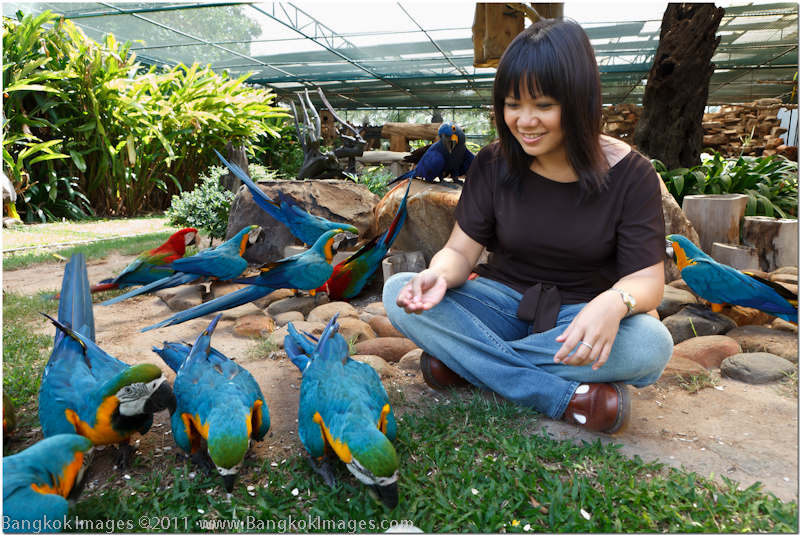
Canon 5d Mark II, 24-70mm F2.8L @F8 1/40th 24mm ISO 400
Soon the birds accepted us and we wandered throughout the aviary without notice. It was quite the experience and an absolute pleasure. But soon the heat and humidity got to us and it was time to head over to a fine lunch with Dr. Bhokin and his family.

Canon 5d Mark II, 24-70mm F2.8L @F8 1/100th 45mm ISO 400
We chatted about his bird farm over lunch and I learned he’s not yet finished, ongoing plans for additions and improvements are everywhere. When I return for my next visit I’m sure there will be many changes.
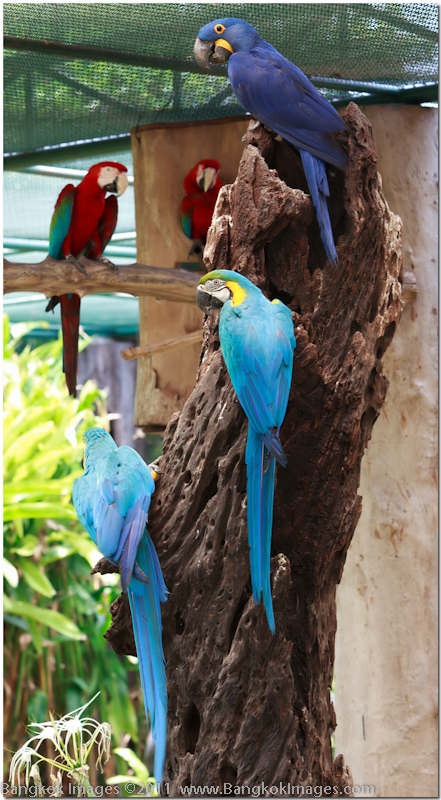
Canon 5d Mark II, 70-200mm F2.8L IS @F5.6 1/80th 95mm ISO 200
One area I hope he improves is his website. This is a great place, perhaps even my favorite location within a few hours drive of Bangkok, and I’m sure many of you would really enjoy yourselves during a visit. I’d encourage you to make reservations in the comfortable VIP rooms where you’ll wake in the morning with a balcony view over a lake filled with swans, geese, and other species. It’s an absolute great weekend destination. A word of caution: There aren’t many restaurants (that I could find) or minimarts close by, so either plan on driving the 6-8km towards the closest town for dinner, or bring something with you. There is a small restaurant on the premises and I must say the food was great.
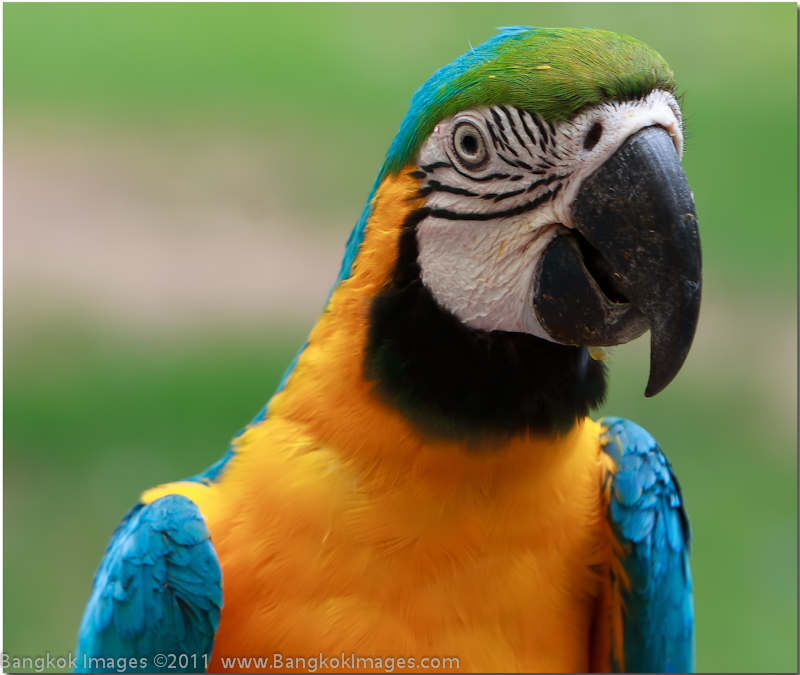
Canon 5d Mark II, 70-200mm F2.8L IS @F5.6 1/125th 155mm ISO 200
There’s a lot more to share about Suanpalm Bird Farm, but it will have to wait until I have more time to organize my notes and process images. With my move back to the states I’d already delayed this piece far too long and I wanted to get the main information out. What a treat!

Canon 5d Mark II, 24-70mm F2.8L @F8 1/250th 24mm ISO 400
WESTERN DIGITAL WD TV LIVE HUB, A REVIEW *menu
Introduction
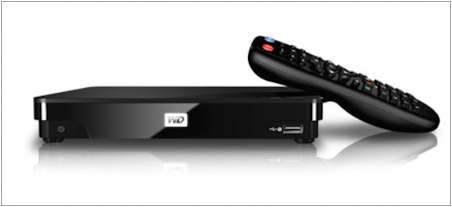
Back in June of 2010 I reviewed the Western Digital TV Live HD Media Player, and was so taken with it that I bought my own and I used it daily up until the time I left Thailand. I pondered taking it with me because even though I’d have to source a 110vac power adapter it would still be incredibly useful. But then I thought I’d want to use some of the on-line features available in the USA which aren’t available in Thailand such as Netflix, Blockbuster Movies, Pandora, and some others. And of course Western Digital came out with their new improved WD TV LIVE HUB, so I reluctantly found it a new home with a friend in Thailand who could use it for years to come.
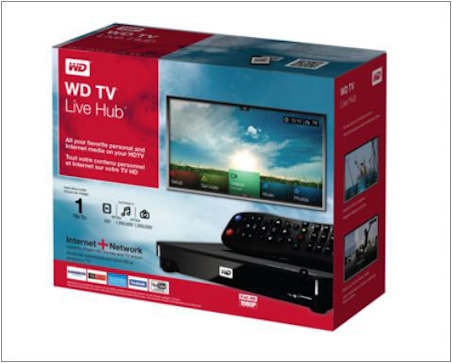
There are other media players, some offer really great value such as the Roku, Iomega, and AC Ryan. However, none of them offers the same list of great features, proven compatibility, on-line service support, and an included 1tb internal storage drive. Once again, the choice was easy, I ordered a Western Digital WD TV LIVE HUB.
The WD TV LIVE HUB interfaces your electronic media (music, videos, pictures, internet) to your HDTV and your network. It includes a built in 1tb storage drive. These are becoming essential devices in today’s world of digital media and on-line resources.
Features
The WD TV LIVE HUB has many features, the most popular I’ll cover here. If you don’t see something you needfollow this link to the Western Digital website and take a look there.
Connectivity
You can connect your Hub to your home network via an Ethernet cable, or most any wireless-N dongle in the front USB port. You can also connect a thumb drive or any USB equipped storage to the front or rear panel USB ports.
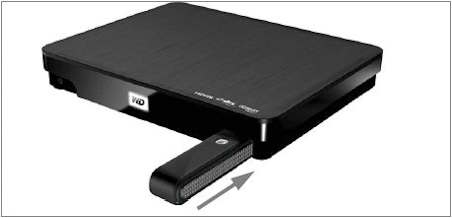
You can connect the Hub to your HDTV via component and audio cables, or the via the preferred HDMI 1.4 port. The Hub also has provides an S/PDIF optical port for connection to your home theater receiver.
Media Server
The Hub is DLNA/UPnP compatible so you can stream audio or video directly to your HDTV, game console, or Blu-Ray disc player. Streaming a file is different than viewing a file via the video/audio output ports, and with the Hub you can stream files to a TV in one room while watching another program on a TV in another room. You can also connect your video camera directly and save your files on the 1tb internal storage.

WD Photos
This is an interesting free app which allows you to upload photos or video straight from your Ipad, Iphone, or Android device directly to your Hub at home. It also allows you to set up an area of the storage for your photos and movies and have them available anywhere at any time. Sort of a limited FTP for your photos and videos.

Full-HD 1080p Video Playback
The Hub allows you to choose virtually any current resolution and frame rate to your HDTV, from 480i to 720p, to 1080i/1080p at the most common frame rates including the popular 1080p 24fps.

USB Keyboard Compatible
The Hub works with wired or wireless USB keyboard for easy text input. This comes in handy for the Youtube and other internet services. WD offers a wireless keyboard as an accessory.
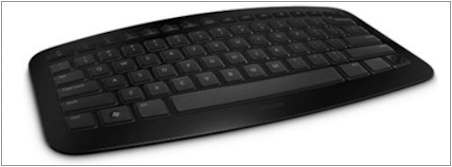
Programmable Remote
The included programmable remote is several levels ahead of the remote provided with the WD HD TV LIVE. It’s bigger and more robust, and it allows you to program your favorite services, folders, or features into custom buttons.

NAS Functionality
The included 1tb internal storage allows you access via your home network, wireless or Ethernet in the same manner as any NAS drive. Map it in your Windows Explorer as an network drive, have your torrent client dump files directly to this device instead of on your computer, or set your backup program to backup your computer directly to the internal storage. This is a really nice feature.
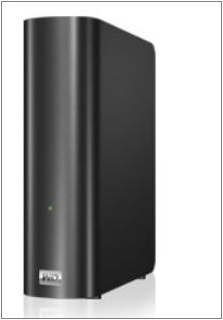
Internet Services
I saved the best for last. Without a computer, you can access your Facebook, Weather, Flicker, Youtube, Pandora, or stream movies directly from Netflix or Blockbuster on Demand. WD can add future services via firmware updates so you’ll always have the most popular services available without the need for a computer.
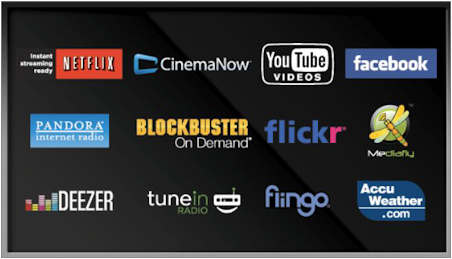
Installation
This couldn’t be more easy to integrate into your home network, television, and home theater.
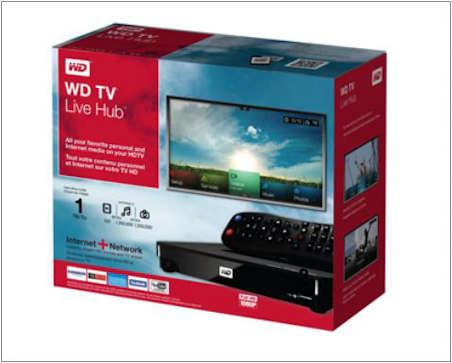
Break it down into four areas, network, television, home theater, and setup.
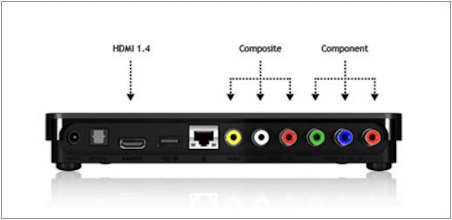
Network
You can connect to your home network via an Ethernet cable or a wireless-N USB dongle. If your home network includes NAS devices or public folders on your individual computers, you can enter the login information only once and the Hub will remember.
My testing reveals Ethernet to be the best, it’s quick and never falters. Wireless-N dongles are a step slower as you’d expect and can stream up to 1080p files IF optimally compressed which always isn’t your choice. And if two people are trying to access the Hub at the same time, or a scheduled backup is taking place, then wireless-N can become limiting. Ethernet will never have these issues. However, if wireless-N is your only choice you can comfortably use the Hub if you understand and take into account it’s limitations.
Television
The best way to connect to your HDTV is via an HDMI cable which isn’t included. You can buy adequate HDMI cables for under $10 most anywhere. You simply connect the cable from the Hub’s HDMI output port, to your HDTV’s HDMI input port. Easy.
If your TV doesn’t have an HDMI port, or you’d rather use analog component cables you can do this via the Hub’s component output ports. Quality component cables tend to be expensive, easily over $50 for a quality set which is important with an analog signal source. You’ll also need to connect the audio via the composite output ports.
If your TV doesn’t have either HDMI or Component inputs, then you’ll need to use the Hub’s composite ports. It’s just a red, white, and yellow RCA connector cable, but keep in mind you won’t be taking advantage of the Hub’s higher output resolution.
Don’t forget during setup to choose the optimum (best) output of your television, or if your HDTV can support 12 bit color set this up too.
Home Theater
There’s only two possibilities here. You either connect the Hub’s HDMI output to your AV receiver instead of your HDTV and then watch everything through your AV receiver all the time, or you simply connect the Hub’s S/PDIF optical port to your AV receivers optical input and then you can use the AV receiver to listen to 5.1/7.1 surround sound movies.
Setup
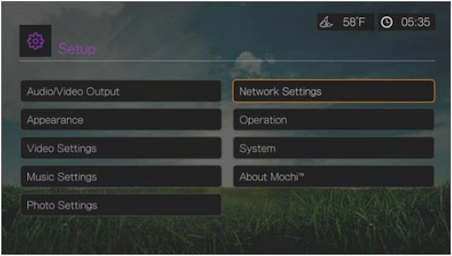
This is all mostly one time setup items. Set them up in order. Choose your Audio/Video output options to take full advantage of your HDTV set. Appearance options are optional but numerous. Video settings allows you to choose 8 or 12 bit color and your output resolution. Music and Photo settings allow you to choose how these items are displayed in their respective menus.
If you used an Ethernet cable your network settings will be automatically detected, if you used a wifi dongle or have NAS devices this is where you’ll set up both. Operation and system choices allow you to set your time zone, temperature F/C choice, and firmware updates. There’s a lot here, but the average user will only be interested in a few of the areas I mentioned. Once this is setup you won’t need to touch it again.
Click here for a list of compatible USB dongles.
Operation
Operation is easy if you understand there to be two main areas, Movies/Audio/Photos, and Internet Services.
Movies/Audio/Photos
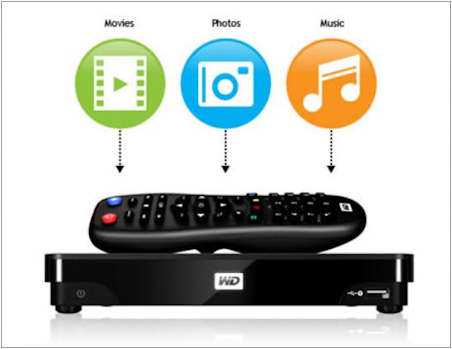
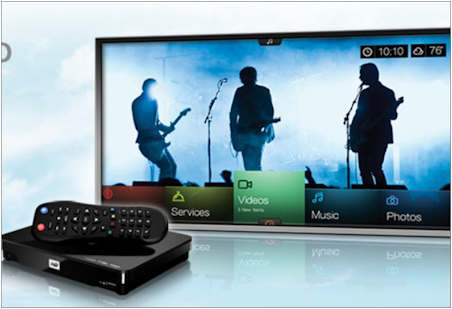
You simply choose if you want to watch a video, listen to music, or view a photo and then click on the category. From there you’ll navigate to the file system of choice, either your internal storage, USB attached thumb drive or other USB storage, NAS (network) drives, or any other device on your home network. Navigate to the file you want and play/view it. Easy.
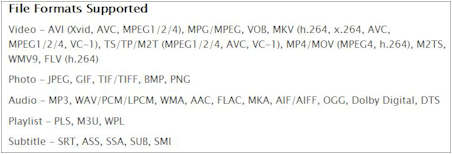
The hub plays every media file type I’ve tried with the exception of RAW camera files. Nothing is perfect.
Internet Services
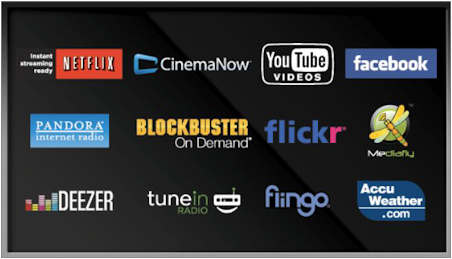
Internet services are a bit more difficult, but not much. Choose Internet Services, and then choose the service you want. The difficult part comes in, in that you’ll need to set up accounts for many of these services and you’ll either need to do that on a computer, or use a USB or wireless keyboard attached to the Hub.
Using the Hub is as simple as choosing what you want to do from the menu (video, photos, audio, services) and then navigating to the desired file. Once you do it a few times it will become second nature and you’ll be wanting to program your remote to make your selections even faster.

Summary
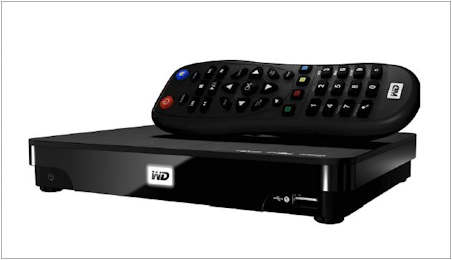
The WD TV LIVE HUB is the perfect blend of capability, compatibility, and connectivity. It does most anything you expect a media hub to do, it’s compatible with most everything you want to use it with, and it easily connects to modern and legacy devices. It does this with a minimum of setup and fuss, and it does the Hub movies through the menus and brings up files quickly. There’s not much not to like.
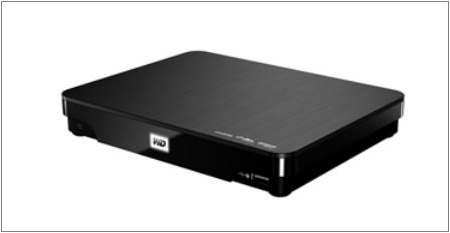
The unit is small, attractive, totally silent, and doesn’t generate heat past room temperature.

If I have a complaint I think it’s more of a caution. As any electronic device evolves it risks becoming a victim of itself. In other words it becomes a monster, it becomes too “much” for its target audience. I’d caution WD to carefully evaluate before adding more features, and if they do, try to do it so it’s fits in the menu system as easily as possible.
Overall I can’t think of anything I want this to do except display RAW camera files. Maybe someday? I also wouldn’t mind seeing a natural progression of internal storage size growth as the 2.5 inch storage format increases. And of course USB 3.0 and eventual Thunderbolt ports.
The WD TV LIVE HUB is an unqualified success! It is a daily use item you won’t want to live without. You’ll regret not getting one sooner.
Photography News of Interest *menu
L’Oreal ads of Julia Roberts and Christy Turlington banned for airbrushing. This one is funny, and outrageous. The British Advertising Standards Authority (ASA) banned both of these ads in the U.K. because ‘someone’ believed the results “were not representative of the results the products could achieve.” Really? It’s makeup. It’s designed to cover and hide blemishes. That’s a big part of what makeup does. Does the ASA have a makeup guru familiar enough with makeup and this specific product to ascertain the results couldn’t be achieved?
What’s interesting to photographers is that the ASA said they could re-evaluate their decision if the photographer would turn over un-retouched photos for their inspection. Fortunately Julia Roberts’ contract prohibits un-airbrushed shots from being released. L’Oreal admits ‘some’ retouching took place, but it takes place on virtually 100% of fashion photography. My point is IT’S MAKEUP. Makeup is physical retouching which is the point of the product, but the ASA is complaining about digital retouching (the photography). In the fashion world they work together, which way you lean (more makeup vs. more photoshop) is a decision for the photographer or art director. Not politicians.
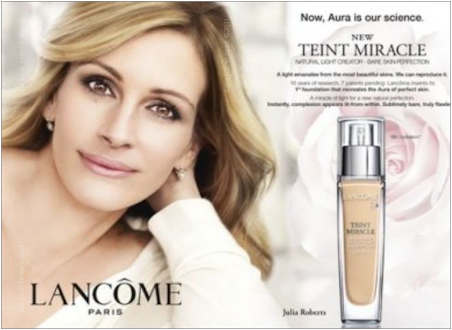
The Photograph That Became An Unintentional Cultural Icon. A great story on how a few photos uploaded to a popular photo sharing site ended up illegally on websites around the world, never licensed but once, in 30-40 different countries. A photo which ended up a cultural icon and would have made the photographer famous and perhaps even rich. You’ve seen it. The Silent Scream.

Stunning cookbook with stunning photography and a stunning price of over $600. Recipes from the ‘new school of cooking’ illustrated with fantastic photography. Check it out.
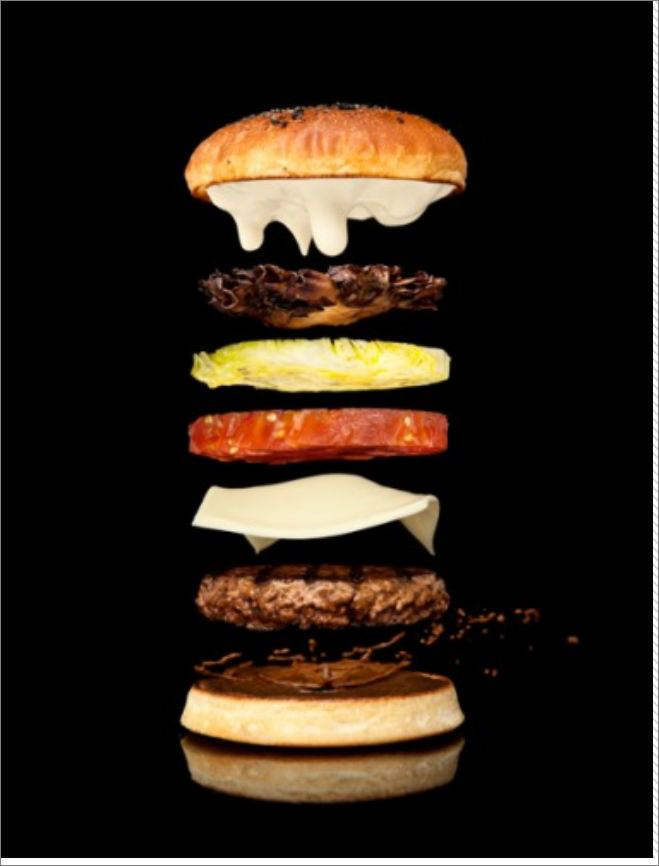
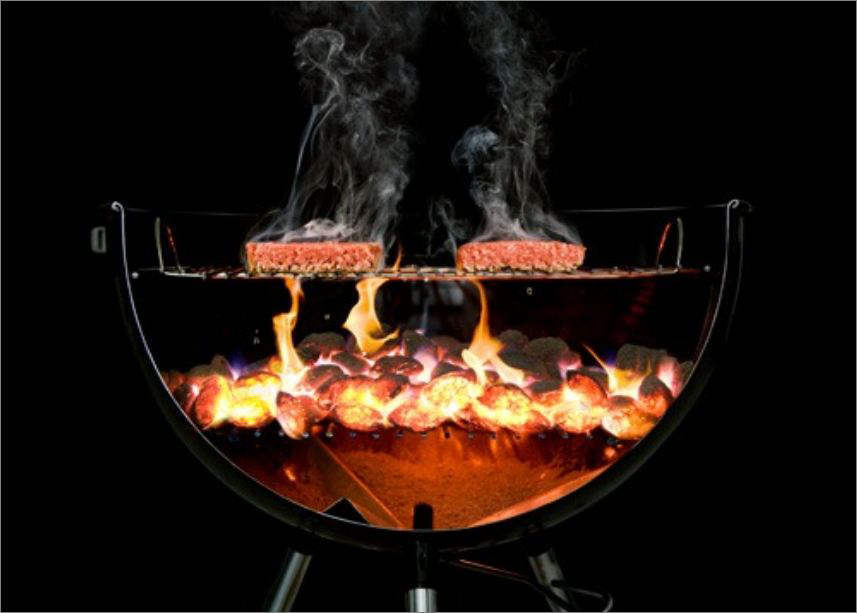
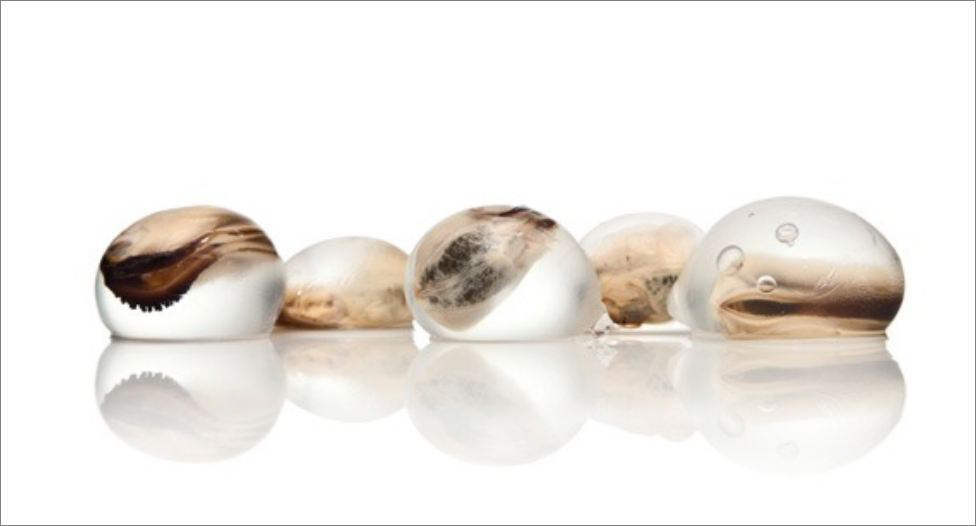
Apple under fire for ‘gay conversion app’. Apple accepts apps from third parties in their store. They accepted this application which offers guidance on how homosexuality can be ‘cured’. Was it a mistake? Did they give in to pressure? Or did it just slip in undetected?

A French photographer lays her body bare for self portraits in everyday work scenes. I have to ask, if she wasn’t attractive would she have chosen this method of furthering her career? Photography is about being creative and coming up with images people want to see, and she’s certainly done that. A man or woman using their looks to further their career is nothing new, what do you think?


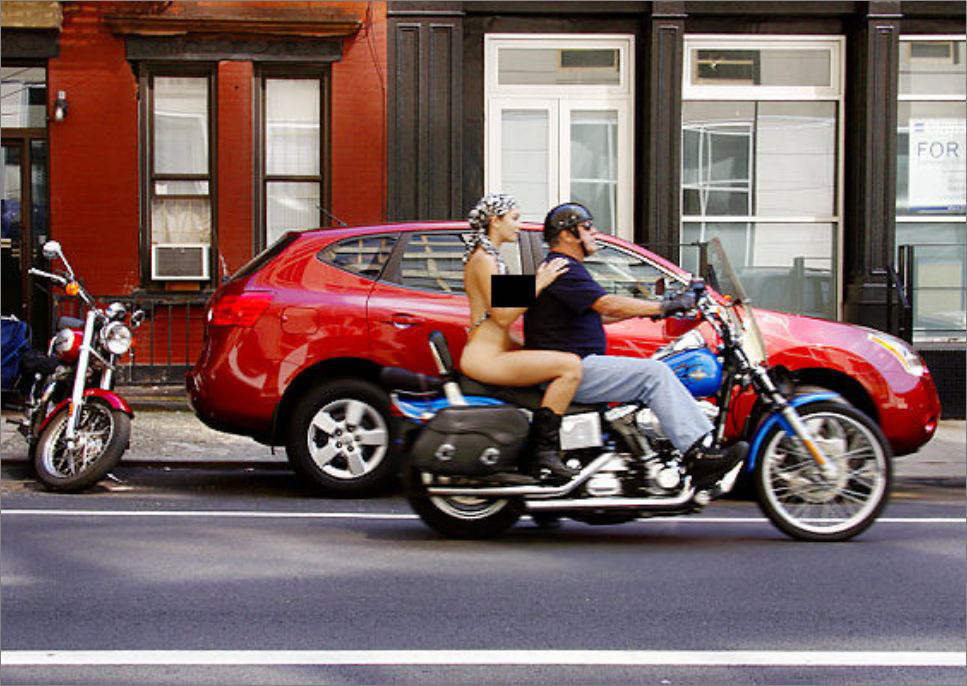
The ‘Mame-Cam DX’ is certainly one of the smallest cameras I’ve seen capable of recording HD video. 30fps HD video in the palm of your hand. $99 USD’s. Personally I think without the weather protection and multiple mounts of the similar GoPro camera, it just won’t make it.

Beijing artist Li Wei is certainly creative. Check out her work.
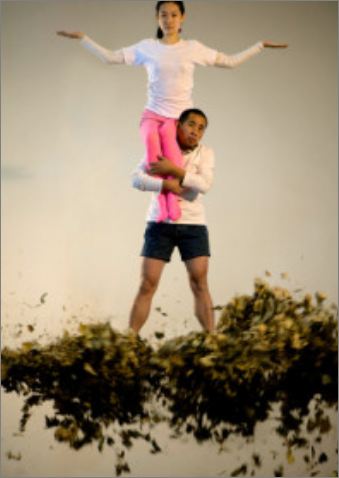
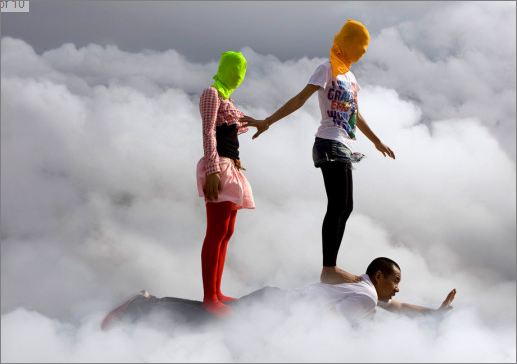
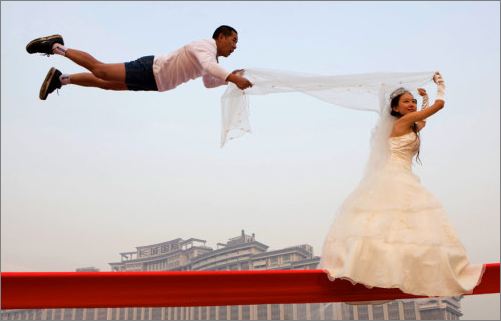
Microsoft releases (finally)codec support for RAW files in both x32 and x64 versions. Hurray!
They should have done this years ago. And to add insult to injury very few current cameras (those released in the last 12-18 months) are supported, like the popular Sony NEX-5, Fuji x100, Canon 7d, Nikon 7000. So why release such an incomplete
product? Only Microsoft knows. However, if you’ve ever wondered why your thumbnails of raw files don’t show up in Windows Explorer, or aren’t supported in any of the Microsoft image viewers, it’s because these codecs
weren’t yet available. Fast Picture Viewer was kind enough to release a more complete codec pack several years ago, I suspect many will still be using it over the Microsoft version.

Readers Submissions *menu
Steve
I am sending them as attachments. I think that you will be able to blow them up better that way.
Mike








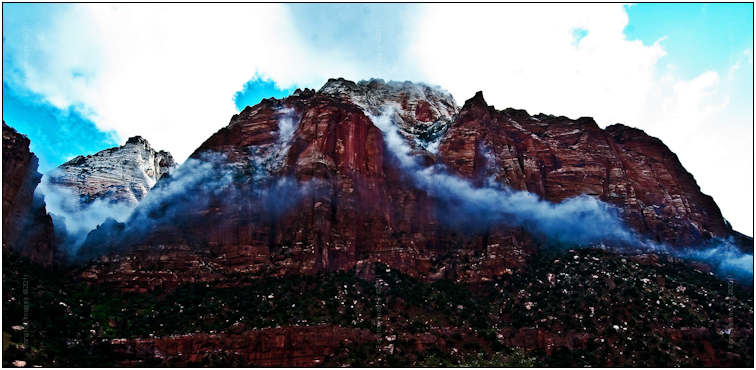
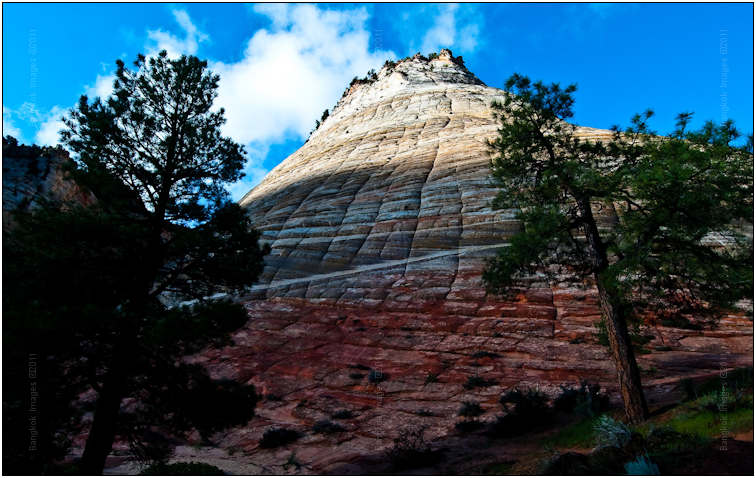
Mike –
You’re compositions are getting much better. These are very nice images. Still, I can’t help but feel your monitor isn’t profiled correctly. What are you using to profile your monitor and are you checking it every month?
You’ve come so far since our workshops together. It really makes me feel good to see such improvement. Did you decide on your new camera yet?
Take care Mike
Steve
Steve –
Here are a few phone pictures. I hope you enjoy them.
JTG
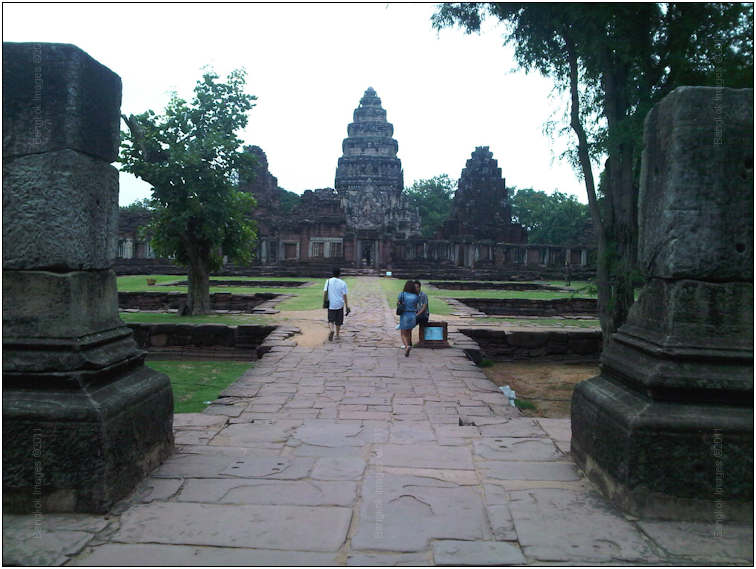
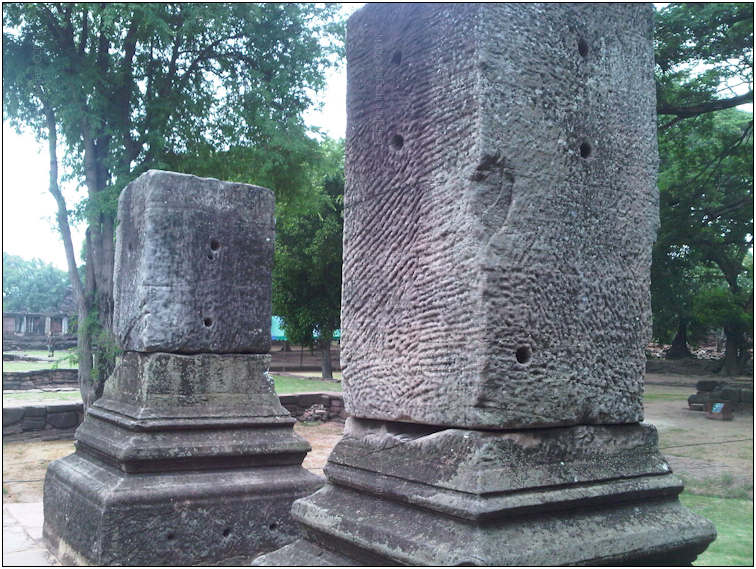
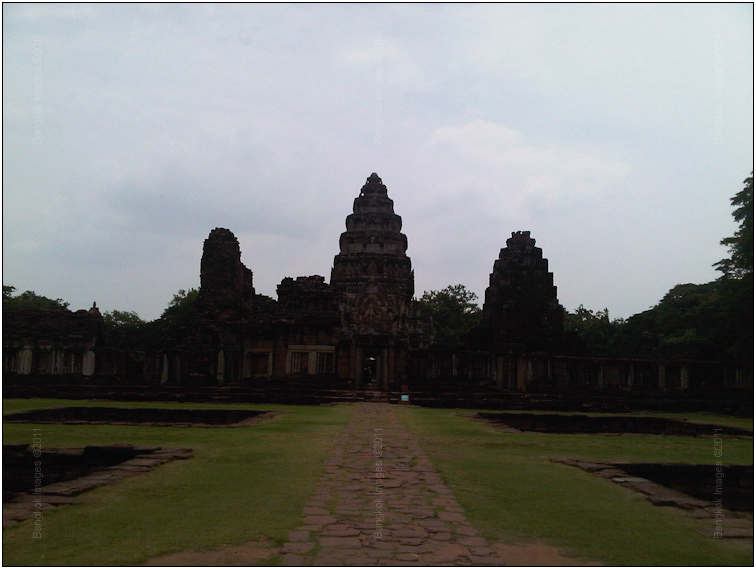
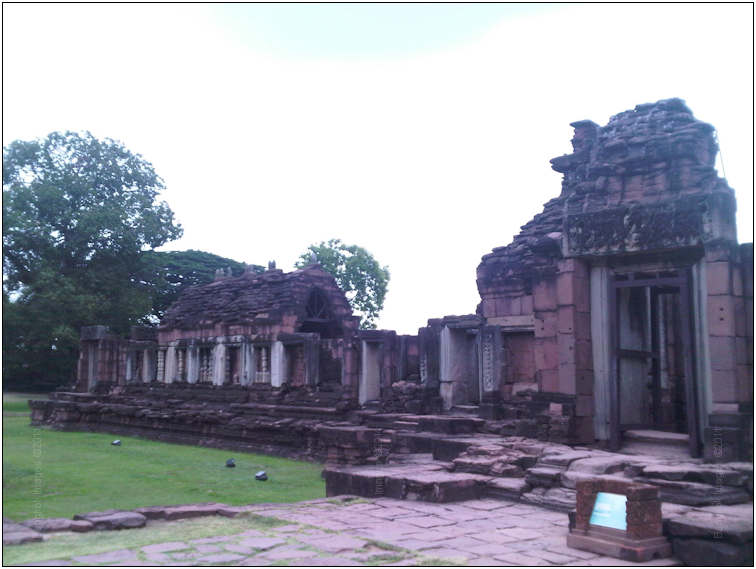
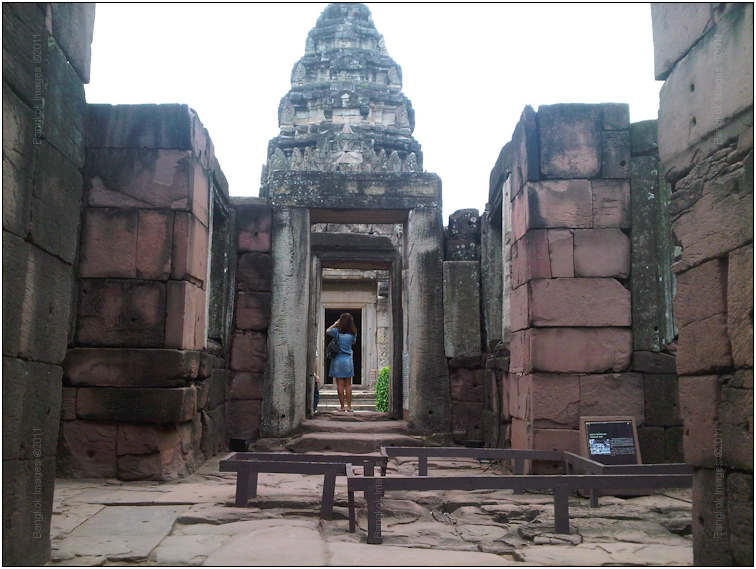
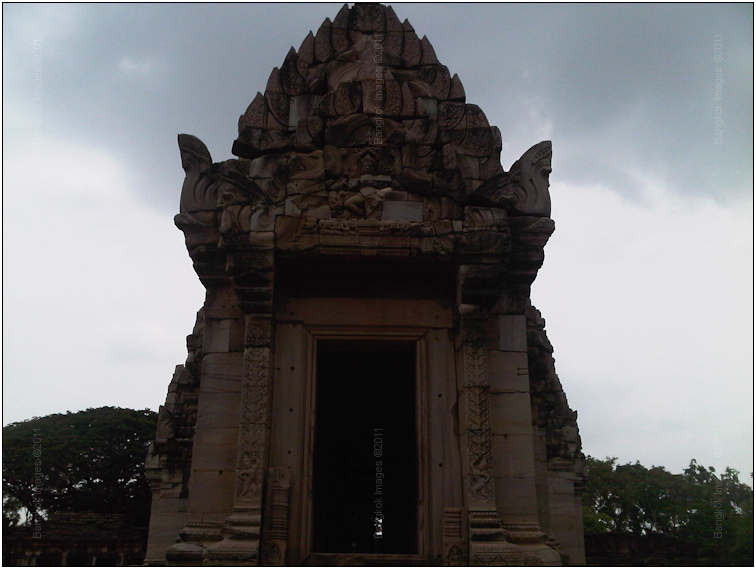
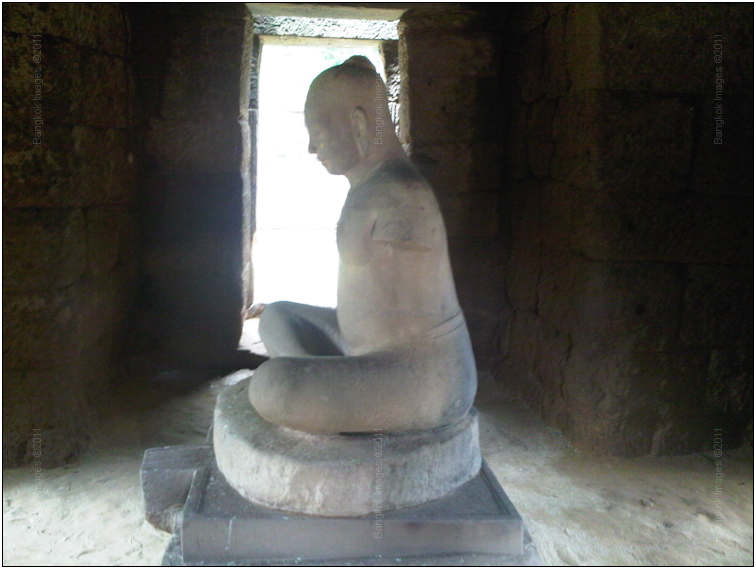
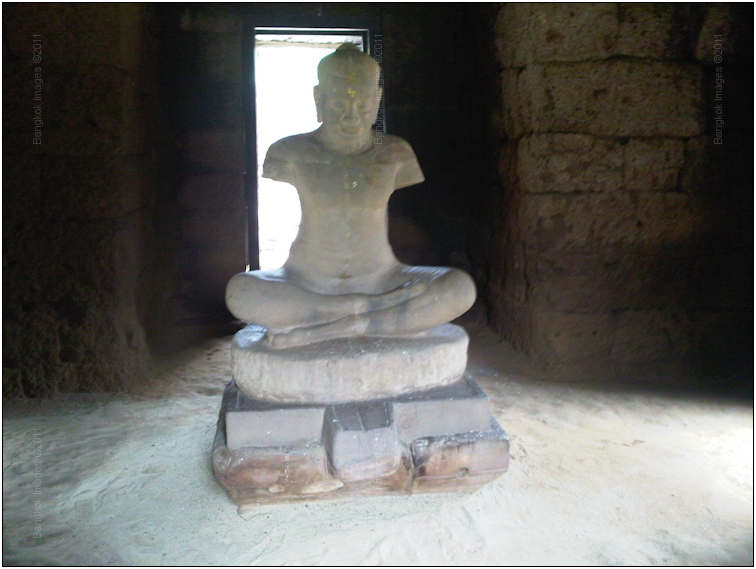
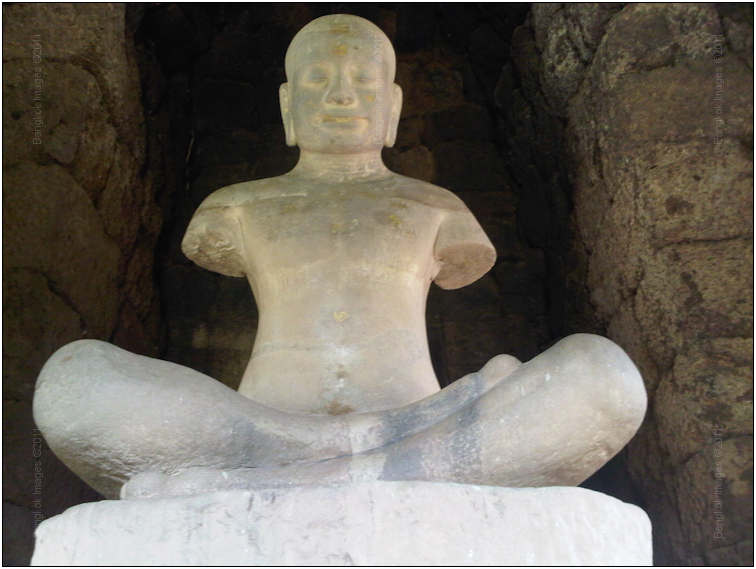
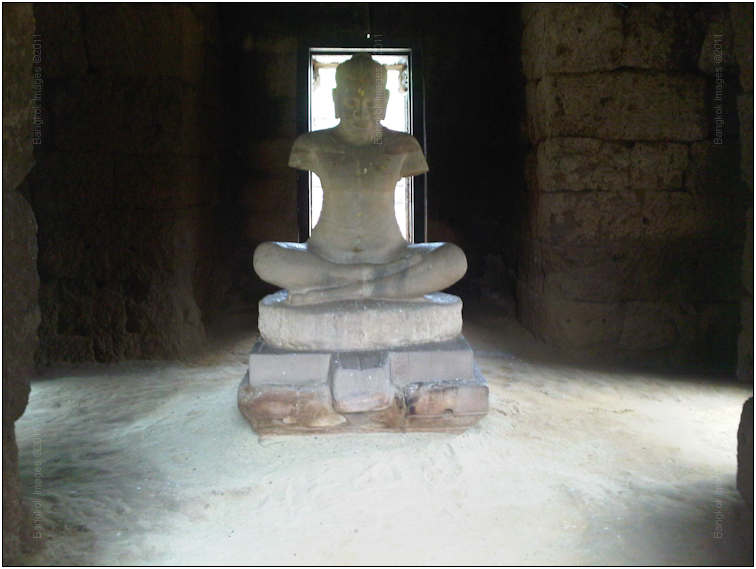
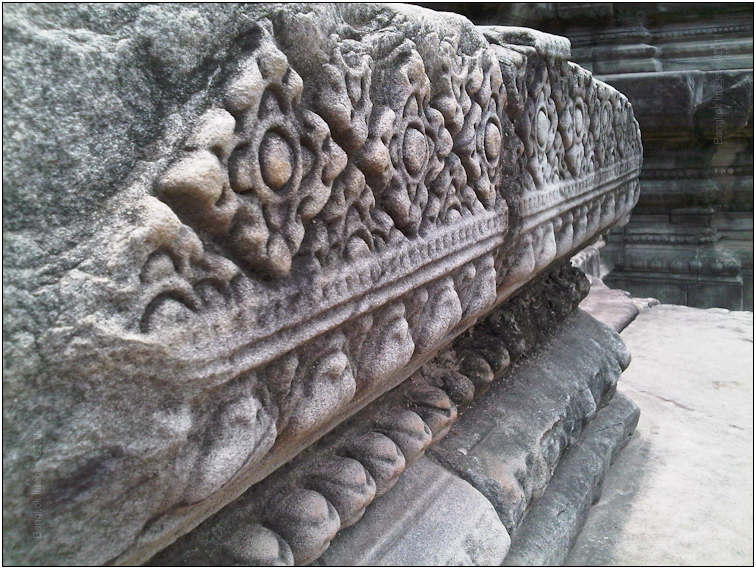
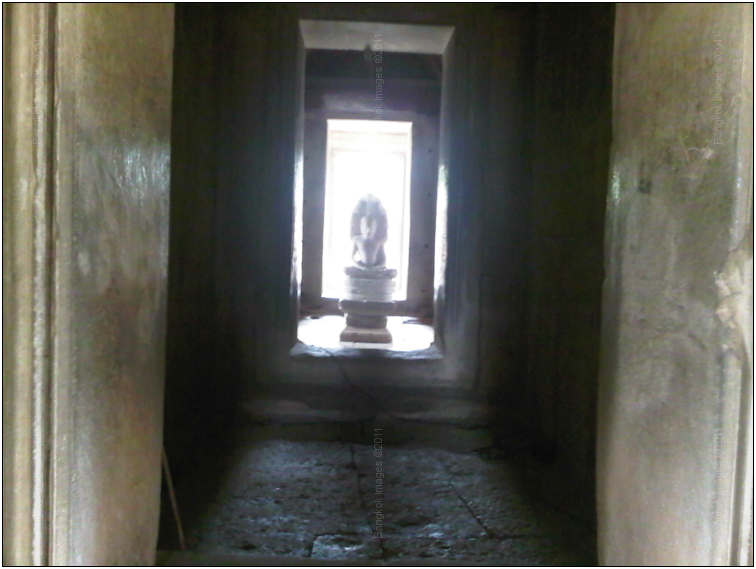
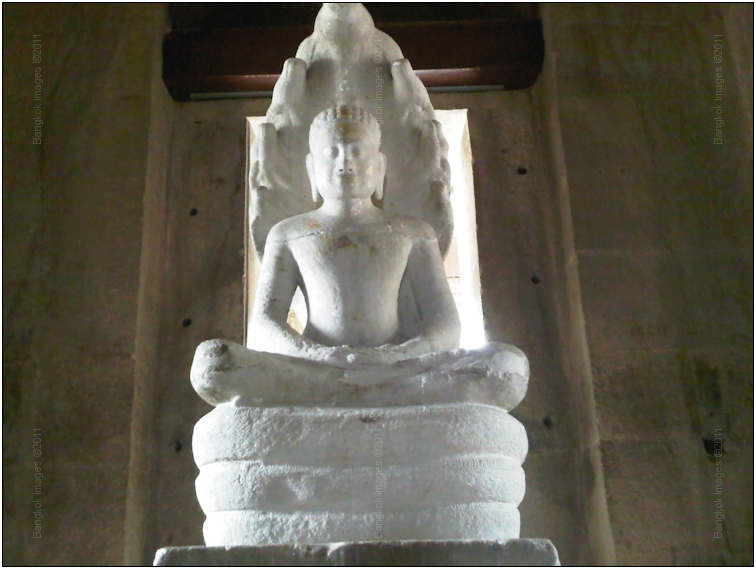
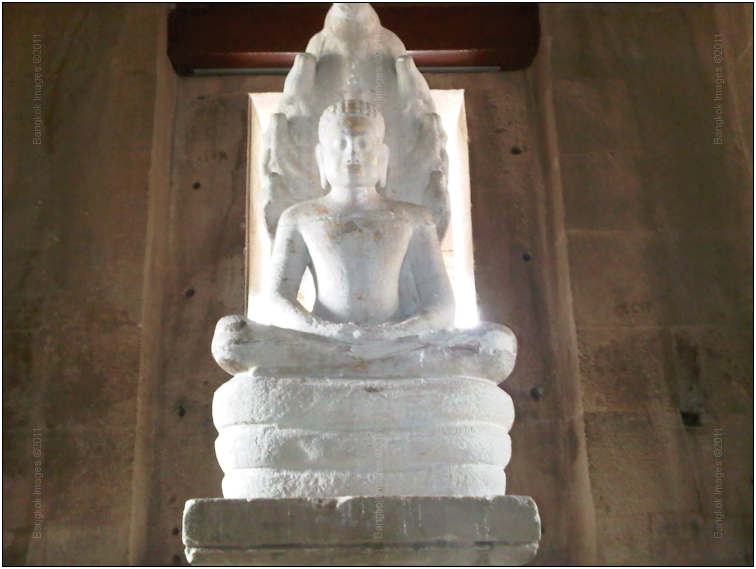
JTG –
Thank you. We’re always glad to post your images. You really travel! Phone pictures are very popular and I’m glad to get some good examples. More and more phones are replacing small point and shoots, and they’re becoming much more capable.
Thank you
Steve
I’d like to mention that everyone, myself included, is really enjoying the current trend of readers submissions. Everyone loves them, but remember we can really use more. I have only another week’s worth in my queue, so please take the time to put together a few images and words if you can and send them in. Thank you. info@BangkokImages.com
Readers Questions *menu
Steve
Question 1:
Attached you will find a series of pictures taken with both my Sony NEX-5 and my Sony DSC HX7V.
The pictures are of a small flower in the yard, and when looking at them with the naked eye every detail stands out very clearly.
However the photographs of the flowers are not clear, showing little detail in the center of the flower, and even with post processing there is no change.
The series titled " NEX 1,2,3" were taken using RAW, Program Auto and with no post processing.
The series titled "DSC A,B,C were taken using jpeg , Program Auto and no post processing.
What suggestions, or settings, might you have to enable a clear focus of the entire flower, including the inner core?
Question 2:
Do you have, in your tutorials, a review of the use of the HSL feature in Lightroom 3? A description of the Hue, Saturation and Luminescent sliders for each color.
I have some understanding of each of the options and what the use is, but could use additional information.
Question 3:
In your latest response to me you made this comment:
Your report will be well received. Have you noticed under the “most read” sidebar widget.. your “Rick reviews the Sony E Mount 18-200mm” has received 968 views? I wish my work got that many..
I do not find the “most read” sidebar widget.. on my screens. Perhaps I do not have the latest Release downloaded.
You said you enjoyed questions so here are a few. LOL
Great first release of the weekly column and very enjoyable to read. Perhaps we have a budding Hemingway in our midst.
Thanks as always….
Rickster
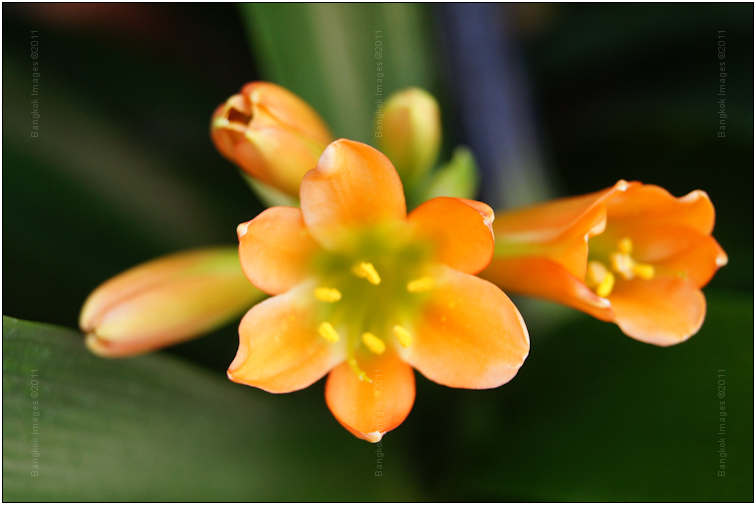
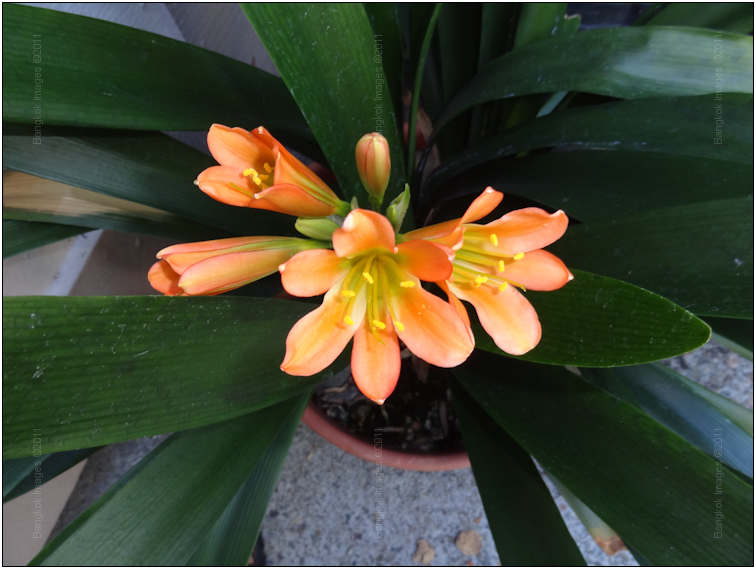
Rickster –
Nice to hear from you again. Would you settle for 2 out of 3 answers? The instinct to bargain is deeply embedded after a total of ten years in the Kingdom.. J
Question 1:
Yes, I can help you with this one and have you shooting clear flowers in just a few minutes. Really. What we have in all six of your images is a shallow depth of field (DOF) which can easily be corrected by stopping down your aperture. This means you’ll need to use either Manual or Aperture Priority and set your aperture to at least F11.
The theory of DOF can be found in this tutorial Aperture: One of the Basics You Need to Know, Depth of Field: A Useful Tool For Your Composition , Playing With Depth of Field, and there are at least 3-4 other tutorials on depth of field. It’s an important concept to master.
The DOF formula goes like this if you desire a shallow DOF:
- Increase focal length (for example, 200mm gives you less DOF than 50mm)
- Increase aperture (for example, F2 gives you less DOF than F8)
- Decrease focal distance (for example, 24 inches gives you less DOF than 100 inches)
- Increase sensor size (for example, an APS-C sensors gives you less DOF than a point and shoot 1.7 sensor)
To put it simply, your focal distance was very short, your focal length long, and your aperture relatively wide. The recipe for a shallow depth of field, in your case less than inches. You nailed the focus on the stamen of the flower. ½ inch from the stamen you lost focus. Make your settings F11-F22 to get the desired depth of field.
Here’s the problem with macros. It’s hard to hold the flower still, a bit of wind can move it a lot. As you stop down the lens your shutter speed greatly decreases making a tripod and shutter release mandatory, otherwise your image will be blurred. You can increase the exposure to adjust for your decreased aperture by increasing the time your shutter is open, increasing the amount of light (use a reflector and bounce it in, or use a nice ring flash for macro work), or increasing your ISO. Increasing your ISO of course will result in less detail, more noise, and loss of color depth.
The best macros are the result of much hard work and usually a tidy investment in gear. The longer focal length helps, a quality tripod with a quality articulating head, a quality light source, and all the time and patience to set things up properly. Many photographers even tie down the flower so the wind doesn’t move it.
Question 2:
No. The HSL feature in Lightroom is a feature best used only after mastering the more basic controls like exposure, presence, detail, and lens/camera correction. It’s also best done in a workshop environment because it’s highly visual. I’ll remember this question when I start producing video tutorials later this year.
Question 3:
The Most Read Articles sidebar is on the right side of the What’s New page right below the Most Recent Sidebar which is right below the weather sidebar. See the screen shot below:
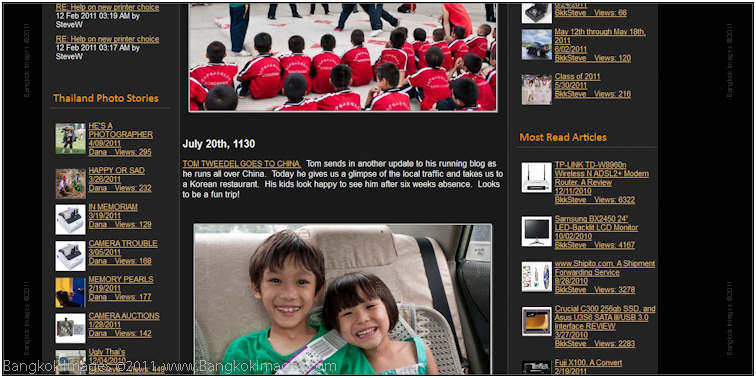
If you still can’t see it, it’s possible you’re browser hasn’t refreshed it’s history in ages. Try holding down your Control key and then press your F5 key. This will force the page to reload to the most recent rendition. If this is the case, you need to investigate your browser settings to refresh your pages more often. I’ve had the “Most Read Articles” sidebar in place for almost a year now.
You’re right, I do enjoy questions and these were some really good ones. Let me know if you need more explanation on depth of field after you read a couple of the tutorials, and I’d like to see some more samples once you do.
Take care Rick
Steve
Please submit your questions to info@BangkokImages.com All questions will be answered and most will show up in the weekly column.
A Snapshot of Bangkok Images Week in Review *menu

Moving is hard work. And it’s much easier when you’re young. This week we’ve wrapped up the last major project which was organizing the garage so we could put our cars inside. Looking up and down the block I think I might have the only garage clear enough to park cars inside. A special thanks to my sons, without their young and strong backs I’d still be looking at another month of work. I’m proud when they help, but I’m more proud they never complain or try to get out of the tough jobs.
There won’t be a column next week. Now that our work is done, and with a friend coming into town next week, we’re going to get in the car and explore our new city and maybe more. I have my eyes on the Lincoln Presidential Library, I’ve heard really good things about it. We’ll be back with a full column on the August 13th with no other breaks currently planned.
It’s currently the beginning of monsoon season in Thailand, are you out there getting great images? If so, please send them in and share. I have several feature articles readers have sent in I’ll be using in our next columns. I was going through them last night and I’m impressed. Much hard work went into putting them together. I can’t wait to run them. But we need more, more Readers Submissions, more Readers Questions, and any material you think would make a good Feature Destination. Keep them coming. Thank you.
Infocus Blog, The Storyteller *menu
When setting up our new home I made sure to mount my prints on our walls in attractive frames. There are so many when someone walks through the doors they kind of smack them in the face and for most everyone, all they can do is stare. I derive much pleasure
from this, watching them stare, move through the images, and then settle on one or two which strikes them as especially interesting. For a long time I’ve experimented with what makes people gravitate to certain imagery, thumbnails, shapes
and colors, etc..

Once they settle on a certain image then the questions start. This is where your story telling skills come into play. It’s like fishing. When you feel them nibbling around the hook, tasting the bait, you need to let them move in and take bigger
bites and then JERK that hook up and sideways at the same time to set the hook. Then you’ve got them. It’s the same way with images and storytelling. It’s not enough to tell them what the image is and where it’s from.

You need to get them interested in the image to the point where they follow along with your story on how you got there, the moments leading up to the image, the people you met who helped you get to the shooting location, maybe a few stories of the local
community. Good story telling is a skill, you want to leave them wanting more. Never give them all they want the first time. Give them just enough so the next time they come over they’ve saved up their questions and start expressing an
interest in travel.

Those who have never traveled need to be brought into the story bit by bit, to feel every bit of your experience, but in the proper order. You’re not your fifth grade history teacher making the class watch his summer trip slide show. Instead, you
become their portal to a faraway word replete with ancient wonders, colorful people, and adventurous stories. With the help of your images, you’re taking the place of their HDTV and Discovery Channel programming.

Are you up for the challenge? Can you enrich someone’s life and turn their humdrum day into something special? A few general guidelines I’d recommend is to pick just a single picture from each location, or each genre, and don’t bore
them with 100-200 images of the same location. Get this image properly printed and attractively mounted and up on your wall. Catch their interest with this strong visual.

Have subsets of your images ready to go, but not on a computer or HDTV, take the time to make attractive portfolios they can set on the coffee table in front of them or hold in their lap. DO NOT send them to your Flickr account, they’ve seen it
all before. Too many times. But they probably haven’t held a quality portfolio, felt the leather and fine papers, and isolated each image with such precision.

Nothing is worse than saturating ones senses with hundreds of images that all look alike. If someone shows an interest in a certain place, then by all means break out the galleries, but otherwise keep them to yourself. Keep the adventure alive by feeding
it to them bit by interesting bit.

When you tell them about an image, how you got there, who helped you, the locals you met along the way, share all the interesting facts, but even if they ask don’t tell them what equipment you used or any of the technical aspects. They’re
not ready for that yet. You need to get them hooked on the adventure, on the stalk, on the hunt for the capture. Make them feel they could do it, help build their fantasy. And perhaps someday it will be their reality and you’ll have done
someone the best favor imaginable.

It’s not enough to share photographs. That’s only a small part of the job. You need to share the experience. Help them feel the heat and humidity from the jungle, hear the sounds of the sois, and smell the foods from the street vendors.
That’s photography!

Take it further as you narrate the story. Help them get to know the people you met. Monotones don’t cut it. Instead, vary the pitch and inflection of your voice, mimic strange accents, help your experiences and travels come alive in their minds.

I remember once trying to describe Angkor Vat and failing miserably. I sat alone that night going over my failure and making a plan for the next try. It’s a wonderful privilege to be asked, but you’ll need to earn the repeat.

Often I find children the more apt listeners. I’ll show then the image and start the story, and soon I’ll notice their parents listening and moving closer, soon they’ll take over with the questions, but don’t let them! It’s
fun to put them on the same level with their own kids, all of them interested in your adventure and all (albeit on different levels) dreaming about living your experiences. It’s the best type of gift you’ll ever
get from your art. Telling the story to interested parties is only second to living the experience in the first place.

Go ahead, share your images, your adventures, and your love for travel. But do take the time to present them properly. No Flickr, no Ipad full of pictures, none of that.. they’ve seen it 1000’s of times before. A properly printed and mounted
photograph is worth ten Ipads full of images. Your personal account of going there, traveling to the site, describing the people and the food and the rickety taxi, all of that is worth more than a room full of Ipads. You’re the photographer,
the artist, and the story teller. The world is your audience, your home the stage.

Bait them, set the hook, and then thrill them with your travels in the same way you experienced them yourself. Travel and exposure to different cultures is a gift, a gift best shared freely and with enthusiasm. A gift which can truly change someone’s
life. Motivate their desire for travel. Excite and thrill them. Be the storyteller.
Until next time..





